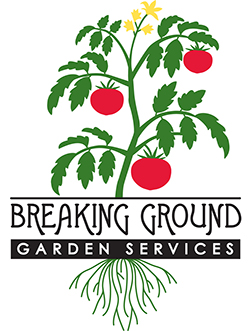Published by the Master Gardeners of Alameda County
by Birgitt Evans
As the recession takes its toll and as people become more aware of the benefits of fresh, locally grown food, many people have started their own vegetable gardens. If, however, one of your goals is to save money on food, you are much better off growing your vegetables from seed rather than buying them in 6-packs.
Buying seed from a nursery or ordering from a specialty seed company costs less and gives you thousands of varieties to choose from, including heirlooms, Native American crops and the latest hybrids and it allows you to select varieties adapted to your specific growing conditions.
Many seeds do best when sowed directly in the ground. These include larger seeds like beans, corn, squash, cucumbers and melons, which should be planted in April or May after all danger of frost has passed and the soil has warmed. Some smaller seeds like lettuce, Asian greens, spinach are best direct-planted in the ground but can be started indoors, especially during the cooler months. Carrots and other root crops should always be direct-planted and will germinate in all but the coldest months.
Other seeds should be started indoors, in a sunny window or under lights, and then transplanted out when the soil warms up. These include tomatoes, peppers, eggplant, basil, broccoli, cauliflower and cabbage. To start seeds you will need the following equipment: pots, labels, a growing medium, trays (without holes), a light source, a heat source, fertilizer and, of course, your favorite seeds.
All of your equipment needs to be thoroughly cleaned to avoid fungal diseases such as “damping off” and you want a light, airy and sterile growing mix. You can purchase a pre-mixed seed starting mix or you can make your own using 2/3rds peat moss and 1/3 either perlite or vermiculite. You can plant seeds in old 6-packs, paper pots, egg cartons, soil blocks and a variety of other containers.
To begin, moisten your growing medium and mix it thoroughly, then fill your containers, making sure the medium is packed firmly, but not compressed. Make up a label. Plant your seeds, 2 or 3 per 6-pack cell, about 2 – 4 times as deep as the seed is in diameter, using a pencil or chopstick to make your holes. When you are finished, place your pots in a tray and add water to the tray.
Place your tray on a heat mat designed for seed starting, on your refrigerator or in another warm place. When the seeds germinate, they will need a bright light source. An inexpensive shop light, hung on chains so that the lights can be kept 2″ above the growing seedlings, works well. Or you can use a sunny window. Your seedlings will also need a dilute, 2-2-2 fertilizer, since the growing medium contains no nutrients.
Most seedlings need to remain in their pots for 6 – 8 weeks before they are ready to transplant into the garden. A week before planting, you will need to harden off your seedlings so that the strong sun doesn’t burn them. Set them out in the sun for 2 hours the first day and then gradually give them more sun and get them used to outdoor temperatures by leaving them out at night. Then you will be ready to plant them in your garden and enjoy the fruits of your labor!

